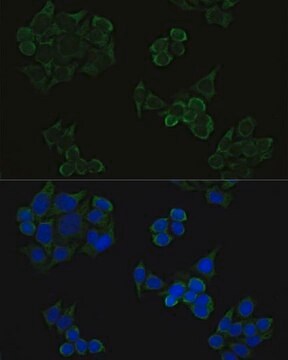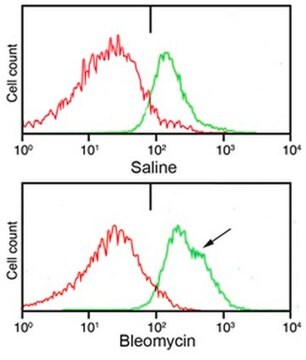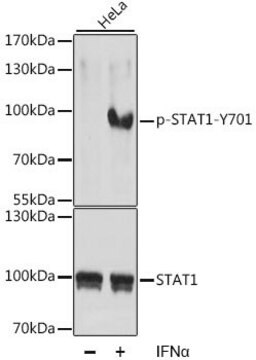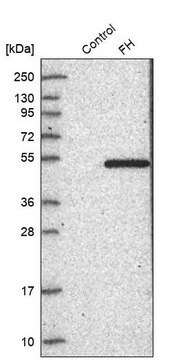MABF935
Anti-MPR300/IGF-2R/CD222 Antibody, clone 2C2
clone 2C2, from mouse
Sinônimo(s):
Cation-independent mannose-6-phosphate receptor, 300 kDa mannose 6-phosphate receptor, CD222, CI Man-6-P receptor, CI-MPR, IGF-II receptor, Insulin-like growth factor 2 receptor, Insulin-like growth factor II receptor, M6P/IGF2 receptor, M6P/IGF2R, M6P-R
About This Item
Produtos recomendados
fonte biológica
mouse
Nível de qualidade
forma do anticorpo
purified immunoglobulin
tipo de produto de anticorpo
primary antibodies
clone
2C2, monoclonal
reatividade de espécies
human
técnica(s)
affinity binding assay: suitable
immunocytochemistry: suitable
immunohistochemistry: suitable
western blot: suitable
Isotipo
IgG1κ
nº de adesão NCBI
nº de adesão UniProt
Condições de expedição
dry ice
modificação pós-traducional do alvo
unmodified
Informações sobre genes
human ... IGF2R(3482)
Descrição geral
Especificidade
Imunogênio
Aplicação
Affinity Binding Assay: A representative lot competed against IGF-II, but not pentamannose 6-phosphate (PMP), for binding immobilized IGF-II receptor (MPR) (Braulke, T., et al. (1988). Biochem. Res. Commun. 150(3):1287-1293).
Western Blotting Analysis: A representative lot was labeled with 125I and detected the ~300 kDa IGF-II receptor (MPR300) in lysates from HeLa cells and primary human macrophages (Pohl, S., et al. (2010). J. Biol. Chem. 285(31):23936-23944).
Immunohistochemistry Analysis: A representative lot detected hepatocyte membrane and cytoplasmic M6P/IGF-2R immunoreactivity in normal human liver frozen sections. A reduced immunostaining of hepatocytes restricted to the sinusoidal part of the cell membrane and an increased signals in perisinusoidal cells was seen in cirrhotic livers (Sedlaczek, N., et al. (2003). Br. J. Cancer. 88(5):733-739).
Immunocytochemistry Analysis: A representative lot immunostained late endosomes in 2% paraformaldehyde-fixed, 0.01% saponin-permeabilized human fibroblasts (Bakker, A.C., et al. (1997). J. Cell Sci. 110 (Pt 18):2227-2238).
Inflammation & Immunology
Vesicular Trafficking
Qualidade
Immunocytochemistry Analysis: A 1:250 dilution of this antibody detected MPR300/IGF-2R/CD222 in HeLa cells.
Descrição-alvo
forma física
Armazenamento e estabilidade
Handling Recommendations: Upon receipt and prior to removing the cap, centrifuge the vial and gently mix the solution. Aliquot into microcentrifuge tubes and store at -20°C. Avoid repeated freeze/thaw cycles, which may damage IgG and affect product performance.
Outras notas
Exoneração de responsabilidade
Não está encontrando o produto certo?
Experimente o nosso Ferramenta de seleção de produtos.
Código de classe de armazenamento
12 - Non Combustible Liquids
Classe de risco de água (WGK)
WGK 2
Ponto de fulgor (°F)
Not applicable
Ponto de fulgor (°C)
Not applicable
Certificados de análise (COA)
Busque Certificados de análise (COA) digitando o Número do Lote do produto. Os números de lote e remessa podem ser encontrados no rótulo de um produto após a palavra “Lot” ou “Batch”.
Já possui este produto?
Encontre a documentação dos produtos que você adquiriu recentemente na biblioteca de documentos.
Nossa equipe de cientistas tem experiência em todas as áreas de pesquisa, incluindo Life Sciences, ciência de materiais, síntese química, cromatografia, química analítica e muitas outras.
Entre em contato com a assistência técnica








